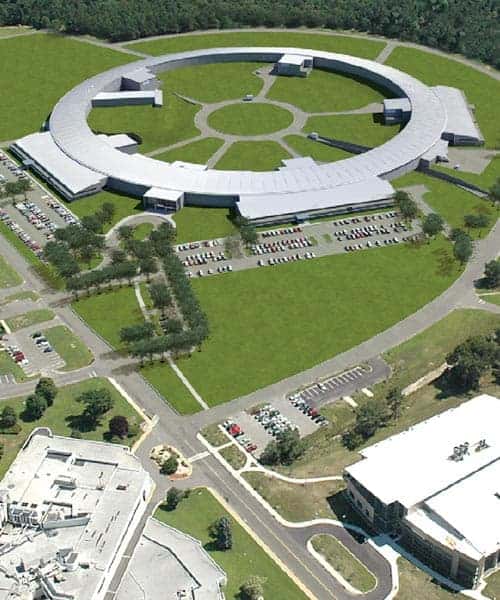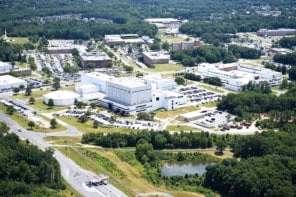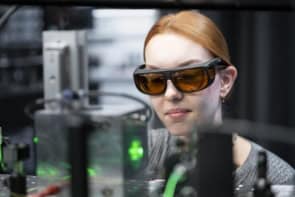Robert P Crease asks how sound are the arguments that the next generation of synchrotron sources are an essential tool for meeting the energy challenge?

Shortly after he was sworn in as US energy secretary earlier this year, the Nobel-prize-winning physicist Steven Chu discussed what he called the “energy challenge” during a visit to the Brookhaven National Laboratory on Long Island. The challenge, according to Chu, is threefold. First, US national security as well as economic prosperity depends on the availability of clean and affordable energy. Second, competition for energy resources threatens to spark geopolitical conflict. Third, the development of alternative energy sources that do not depend on fossil fuels is critical to address climate change.
Meeting the energy challenge, Chu said, requires more than “political will”. It must involve improving the efficiency of existing technologies by a factor of 5–10. This in turn requires not just fine-tuning existing recipes for producing and distributing energy, but also developing “transformative technologies”. To develop these, Chu said, he was placing many hopes in the National Synchrotron Light Source II (NSLS II) – a $912m facility currently being built at Brookhaven that was awarded $150m in stimulus money by the American Recovery and Reinvestment Act and is scheduled to be commissioned in 2015. “I think that one of [NSLS II’s] major contributions will be at the energy frontier,” he said (referring to fuels not particle physics).
In the past, Chu said, transformative technologies often emerged from fundamental conceptual breakthroughs. He gave two familiar examples. One was electronic amplification: the transistors that replaced vacuum tubes were made possible by quantum mechanics, which revolutionized ideas of how electrons are transported in solid materials. The other example was food production, where ammonia synthesis and other chemical-technology breakthroughs led to the ability to get more food from the same land through the use of better fertilizers. Research planned for NSLS II, Chu said, has a good chance of achieving breakthroughs of the sort that lead to transformative technologies.
Those are high hopes, but how solid are they? Synchrotron light sources, after all, are used for a variety of purposes, many of which have nothing to do with energy but instead with things like crystallography. Moreover, such facilities are renowned for not behaving exactly according to plan; their contributions to science often differ from expectations for reasons that have less to do with our intentions than with nature’s complexity. Chu, a former director of the Lawrence Berkeley National Laboratory, surely knows this. So what justifies his confidence that NSLS II can address the energy crisis?
Engineered solutions
Physicists build more powerful machines for three different reasons. One is to look more closely at familiar phenomena and see whether new phenomena can be spotted. These are perennial questions. Or there may be tantalizing hints – indications that something unusual is happening just beyond the horizon of existing machines. Finally, there may be specific objectives if compelling arguments exist that solutions to existing problems await at a specific resolution. Chu’s claims about NSLS II suggest it can solve such specific objectives. What are they?
Existing synchrotron sources have a spatial resolution of about 15–20 nm, whereas NSLS II expects to reduce this to just 1 nm. This is the transitional scale between atomic and bulk matter, where properties change rapidly and in poorly understood ways. The ability to study this domain has several implications.
One is that NSLS II will be able to scrutinize the kinetics of existing energy processes. The rate at which a battery charges, for instance, is a function of the interface between electrolyte and electrode, and the kinetics that control this process take place at the nano-scale. The interface can be seen in bulk with existing X-ray sources and at the atomic level under vacuum conditions with electron microscopes – but studying it with nanometre resolution would reveal how it behaves under operating conditions (i.e. not in a vacuum) and in real time.
Moreover, nanometre-scale resolution will let researchers engineer nanometre-scale structures, such as catalysts and solar cells that use quantum dots, which may be important at the energy frontier. Because of their different surface-to-volume ratios, nanomaterials have different properties from those at the bulk scale. Nano-scale engineering requires the ability not only to inspect such structures, but also to get them to self-assemble. Indeed, there is a kind of “reverse-bootstrapping” effect in which ever smaller structures enable the development of better technologies to engineer ever smaller structures.
Yet another implication of studying this particular scale relates to emergent properties. This scale is an inhomogeneous region in which different forces struggle for dom_inance. Studying how these forces compete and new properties emerge may let researchers design and build materials with qualitatively new properties.
A good example of all three of these implications involves gold. At the atomic scale, gold has certain, well-understood chemical properties, while in bulk it is chemically inert. In between, gold has marvellous but poorly understood properties as a catalyst that seem to peak at the 6 nm scale. In allowing researchers to scrutinize gold catalysts in action and in real time – as well as to study nano-scale particles involving gold – an instrument of nano-scale resolution like NSLS II could help us to understand what kinds of catalysts we should be building to convert fuel more efficiently. It would be a step towards the dream articulated half a century ago by materials scientist Arthur Von Hippel of being able to “play chess with elementary particles according to prescribed rules until new engineering solutions become apparent”.
The critical point
The energy challenge will, of course, also involve reducing demand: we will have to learn to live with less energy, which is a formid_able challenge of a separate kind. But with the world’s population set to rise to 10 billion by 2050, there is no way round having to increase our overall energy supply. The arguments are sound that a more advanced light source, able to reach a resolution of about 1 nm, will help in that quest.



